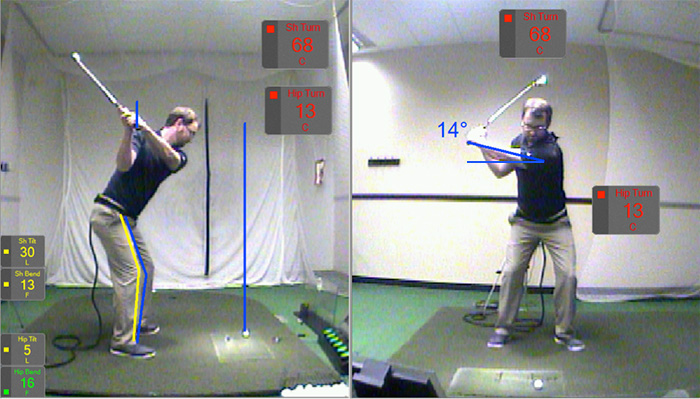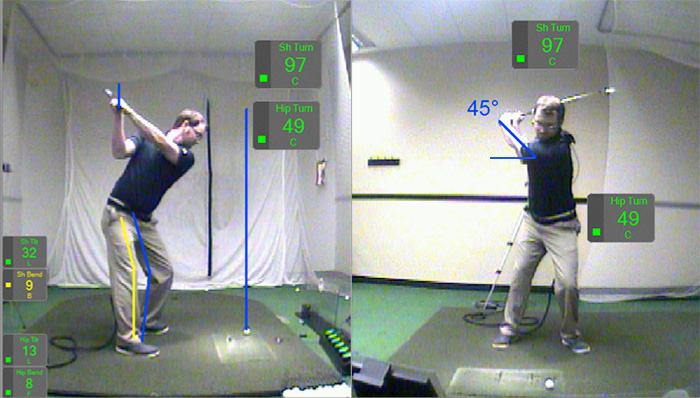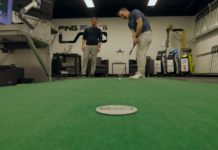 Following my previous article, What Happens When My Head Moves, a gentleman asked a question about my right leg and how straight it is in the backswing. That inspired me to write this post in which we will do three things: review images and swing data on hip and shoulder turns with different knee flexes, evaluate how your body acts throughout the swing and lastly, leave you with a decision to make.
Following my previous article, What Happens When My Head Moves, a gentleman asked a question about my right leg and how straight it is in the backswing. That inspired me to write this post in which we will do three things: review images and swing data on hip and shoulder turns with different knee flexes, evaluate how your body acts throughout the swing and lastly, leave you with a decision to make.
For the past few years, there has been a debate in the golf instruction world on whether you should straighten your trail leg or keep it flexed in the backswing. From what I can tell, this debate will never end. Regardless, we are going to look at both scenarios compared to professional Tour averages.
Lets first look at what happens when you keep your right knee flexed. The Tour average hip turn is 44º and Tour average shoulder turn is 89º. You’ll see below that both my shoulder turn and hip turn, when keeping my trail knee flexed, are extremely low. My shoulder turn measured 68º, falling 21º below the Tour average, while my hip turn measured 13º, 31º below average – yikes! You’ll also notice that the club doesn’t get far past parallel to the ground and the grip end of the club doesn’t move far off the ball, measuring only 14º (illustrated in the image to the right). Why does this matter? You are reducing variables that help you hit the ball far and making it more challenging to hit a draw when you need to.

Now let’s look at what happens when the trail leg is straightened in the backswing. You’ll notice that my shoulder turn is 8º above the Tour average at 97º and hip turn, previously 31º below Tour average, has increased to 49º, 5º higher than the Tour average. Just by straightening my trailing knee in the backswing, my flexibility has suddenly increased! As an added benefit, the grip end of my club is further past parallel with the ground at roughly 45º (see right image). I will be able to hit it further now, and draw the ball much easier.

So there are the swing data and illustrations, now let’s ask some questions.
Think about this and what makes the most sense to you – do your muscles, bones, tendons, tissue, etc. do anything resembling that of a coil or spring? If you twist a bone, joint, or muscle, will they snap back into place? Or will they break, move out of socket, or tear?
This is the root and dividing line between the two different swing scenarios illustrated above. If you believe your body acts like a coil, you might favor the first swing with the flexed trail knee. If you DON’T believe your body will act as a coil, then you might favor the second swing with the straighter trail knee.
I have seen a lot of professional golf swings, both live and via video. What I’ve noticed is that most players straighten their trail leg in the backswing to some degree – some a little, some a lot. How much the knee straightens depends on quite a few things, like how far and high you want to hit the ball, what type of swing path you have, or want to have, and how flexible you are. It truly does vary from player to player.
So that leads us to the decision – what do you believe? Does it make sense for you and your swing to let your body act as a coil, or to straighten your trail knee for additional turn and flexibility? You don’t have to make up your mind right now, your GolfTEC Certified Personal Coach is here to help you make an educated decision based on your swing.










